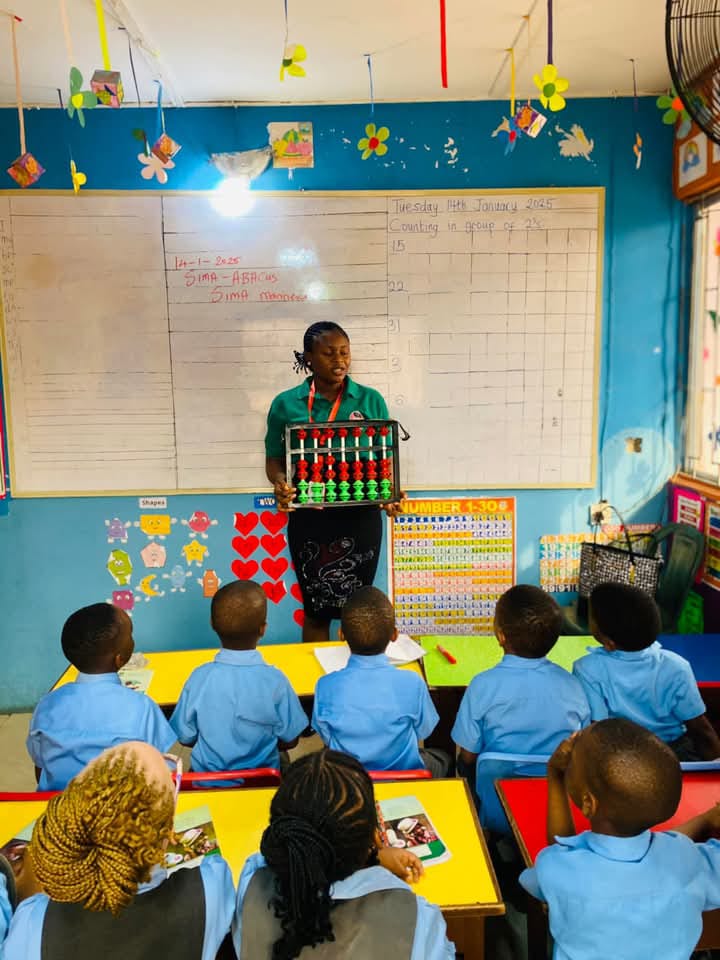Have you ever wondered how something as simple as an abacus can transform your child’s brain? The science behind abacus learning reveals that moving those colorful beads is far more powerful than it seems. At SIMA Abacus, children don’t just learn to count — they activate key parts of the brain responsible for focus, memory, and creativity.
In fact, studies from educational neuroscientists have shown that abacus training stimulates both hemispheres of the brain — improving logic, visualization, and problem-solving. It’s science meeting simplicity, and the results are remarkable.
How the Abacus Shapes the Brain
When a child uses both hands to move beads on an abacus, something amazing happens inside their brain. The movement engages both the left and right hemispheres, encouraging communication between them through the corpus callosum.
- The left brain handles logical, analytical, and numerical processing.
- The right brain focuses on visualization, imagination, and spatial reasoning.
By combining both, abacus learners develop whole-brain thinking, which is the foundation for mental agility, creativity, and strong academic performance.
The Role of Synapses and Brain Plasticity
Every time your child practices on the abacus, they are strengthening neural connections (synapses). These connections form faster when learning involves touch, sound, and visual cues — all of which are part of the SIMA Abacus approach.
This concept, known as neuroplasticity, means that the brain continues to grow and adapt through experience. That’s why abacus learners often show:
- Improved memory retention
- Faster mental arithmetic
- Enhanced concentration and focus
At SIMA Abacus, our training taps into this plasticity using multi-sensory engagement, ensuring that each session physically strengthens your child’s brain network.
Finger Movements and Motor Skill Development
You might think the abacus is just about numbers, but it’s also a motor skill exercise. Each bead movement enhances fine motor coordination and hand-eye synchronization.
Using both hands engages both sides of the brain simultaneously — a method scientifically proven to boost bilateral coordination and cognitive flexibility.
That’s why at SIMA Abacus, children are taught to move beads rhythmically and in sync, helping them develop not just mathematical ability but also motor precision and focus.
Visualization and Mental Math: The Next Level of Brain Power
After consistent practice, students begin to “see” the abacus in their minds. This stage — called Anzan — activates visual memory and mental imagery.
Scientific scans (using fMRI) have shown that children who practice Anzan display increased activity in areas linked to visual-spatial processing. This means they can solve problems faster — not by rote memorization, but by mental visualization.
At SIMA Abacus, we build this visualization skill progressively, helping children move from physical beads to mental arithmetic mastery — all while keeping learning fun and imaginative.
The SIMA Advantage: Where Science Meets Creativity
What makes SIMA different isn’t just our commitment to abacus education — it’s how we apply scientific principles to make learning engaging.
Our program combines:
- Multi-sensory teaching (sight, sound, movement)
- Colour-coded abacus for pattern recognition
- Rhythmic learning through sound and repetition
- Digital tools and e-learning for practice and performance tracking
This blend ensures that every child learns in a brain-friendly, joyful environment. You can learn more about our uniqueness on our SIMA Abacus page.
Beyond Math: The Lifelong Benefits
The benefits of abacus training go far beyond math. Children trained at SIMA develop:
Strong memory and recall
High focus and discipline
Increased confidence in solving problems
Creativity and imagination
These are not just academic skills — they are life skills that help children excel in every area of learning.
For Parents: How to Support at Home
You can help strengthen your child’s brain even outside the classroom:
- Encourage them to visualize numbers while counting.
- Play quick mental math or memory games.
- Celebrate small milestones — the brain thrives on positive reinforcement!
Simple, consistent engagement makes a big difference.
The Science Is Clear — Abacus Learning Works!
At SIMA Abacus, we don’t just teach numbers — we build minds. The science behind abacus learning shows that with every bead moved, a child’s brain becomes stronger, faster, and more flexible.
Give your child the SIMA advantage today.
Visit www.simaabacus.com to enroll or schedule a free demo class.

